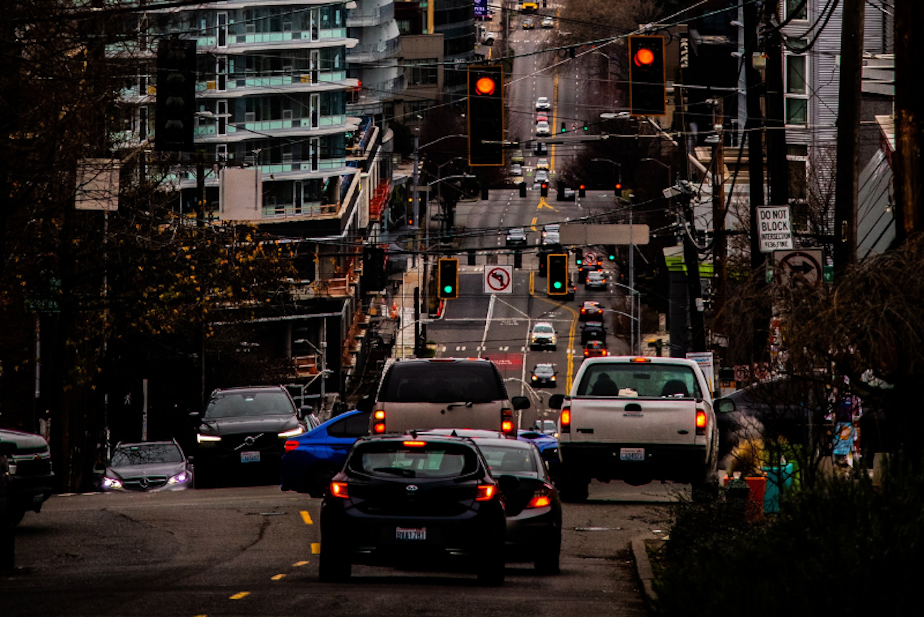Remote work continues to thrive among Seattle commuters

It sounds odd to say, but "remote work" has continued to thrive among Seattle's commuters.
That's according to the results of Commute Seattle's 2022 survey showing how people are getting to and from work. Remote work shot up to 46% of commuters in 2021, amid ongoing pandemic measures. That share held strong through 2022.
RELATED: Can Seattle turn underused office towers into apartment buildings?
The main takeaways from the 2022 survey:
- Remote workers tend to be higher income earners. Lower income workers are more likely to hit the road and work in-person.
- Commuters are more often choosing to work in-office Tuesdays, Wednesdays, and Thursdays. Mondays and Fridays are lighter on the roads.
- Before the pandemic, in 2019, public transit had a considerable share of commuters (46%), but this method has not recovered and was 22% in 2022.
- Driving alone into work trended downward during this time. In 2019, driving alone added up to 26% of commuters. In 2022, it was 21%.
- Rideshares took a hit, going from 9% to 3% between 2019 and 2022.
- Walking trended downward, going from 7% in 2019 to 3% in 2022.
- Biking held at a solid 3% all three years.
- 10% of commuting cars were hybrids, and 6% were electric vehicles.
- Preferences for modes of transportation also break down demographically. Women were less likely to take public transit. White commuters were less likely to take public transit, too. Asian and white workers were more likely to telework.
Sponsored

One point that Commute Seattle notes is that while the share of commuters "driving alone" has declined, traffic congestion has still gone up. This has largely been due to people choosing to drive to places other than work. In other words, cars are still hitting the road, causing congestion, they just aren't going to work. They're going other places.
RELATED: With office employees gone, downtown Seattle residents became the neighborhood's economic lifeblood
"...over 75% of the trips that Seattleites take to grocery stores, healthcare, and school pick-up and drop-off are done by driving alone. We also take more of these trips in a week than we do from home to work."
The commuter survey reflects one-tenth of Seattle workers as of fall of 2022. Recent developments could significantly influence next year's survey.
Sponsored
In February, Amazon announced that it wants employees back in the office at least three days per week, starting May 1. In January, Starbucks made a similar announcement. Of the three days per week that Starbucks wants workers back in the office, two of those days must be on Tuesday and Wednesday.
A range of voices have urged companies and city leaders to bring employees back into the city and its offices, for the sake of businesses who rely on foot traffic. At his recent State of Downtown address, Downtown Seattle Association CEO Jon Scholes said that getting people back into downtown offices is a primary tactic he is promoting to help downtown bounce back.




